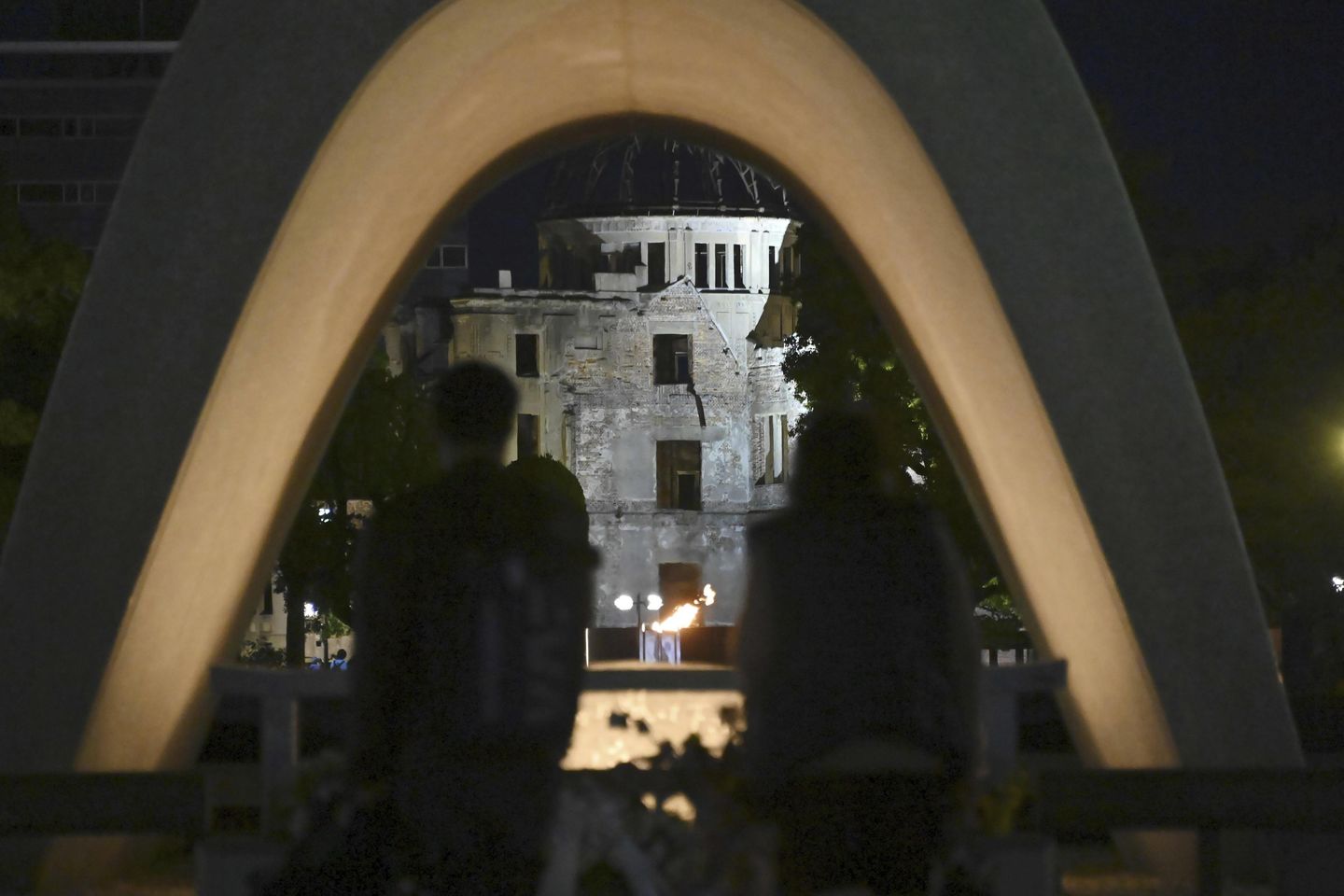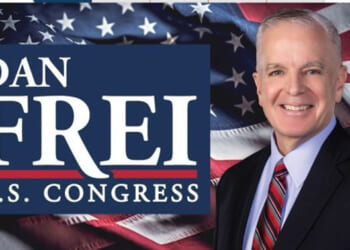
HIROSHIMA, Japan — In this bustling metropolis, not far from busy shopping malls and a modern sports stadium, the modest park surrounding Genbaku Dome is quiet.
Trees muffle the rumble of traffic crossing the nearby Aioi Bridge over the Ota River. Tourists from across the world speak in hushed tones.
The dome, like the Eiffel Tower or the Taj Mahal, is a UNESCO World Heritage site — but a memorial to mass carnage does not lend itself to exuberant selfies.
The skeletal dome and its bare walls are the preserved ruins of the Prefectural Industrial Promotional Hall. It was one of the few structures left standing in Hiroshima on Aug. 6, 1945.
That day, at approximately 2,000 feet (“the hyper center”), the B-29 bomber Enola Gay dropped “Little Boy” over its aiming point, the Aioi Bridge (“ground zero”). Little Boy — a uranium-based atomic bomb — detonated. At 7,700°F, its fireball blazed as hot as the sun’s surface.
Mankind was jolted into the atomic age. Hiroshima was pitched into hell.
After this month’s 80th anniversary commemorations marking the end of World War II in Europe, global attention is shifting to the Pacific and to Japan’s surrender on Aug. 15, 1945.
Tokyo’s Yasukuni Shrine puts forth Imperial Japan’s reasoning for igniting World War II in the Pacific. Similar messaging is not visible in Hiroshima.
“Generally, Hiroshima people have no anti-Americanism,” said Katsugoro Tanaka, a 74-year-old local retiree. “Why don’t we hate America? War is bad! This park is constructed as a desire for no more war and for the abolition of nuclear weapons.”
Still, Japan’s decades of pacifism have come under stress recently. Facing nuclear North Korea, expansive China and invasive Russia, Japan’s Self Defense Force has been quietly expanding its capabilities.
Tokyo has acquired marines and F35 carriers. It is buying U.S. Tomahawk cruise missiles and fortifying its southern islands, north of Taiwan.
Amid Asia’s threatening security environment, there has been minimal public pushback.
The most terrible weapon
Peace Memorial Museum presenters recall that children who spotted the silvery Enola Gay in the summer sky thought it “beautiful as a popsicle.”
Then a great flash flared over Hiroshima. A mushroom cloud curled 60,000 feet upwards. The sky turned electric orange.
Below, a firestorm ignited that melted bronze Buddha statues and fused glass and pottery. The impact on humans — recorded in scraps of scorched clothing, disturbing images and survivors’ letters — was diabolical.
Flying debris caused kinetic damage. Flash burns turned humans into what looked like “broiled and smoked pigs.”
Many had no choice but to view the horrors: Their eyelids had been seared off. Those who had shaded their faces walked like “processions of ghosts.”
Unable to lower their agonized arms, from which long strips of burned skin hung, they held them out in front.
An estimated 70,000 perished on Aug. 6. But dying continued.
Victims exposed to fallout — the gray, uranium-poisoned dust and black rain that fell upon the ruins — would succumb to radiation sickness. Purple blotches (“death spots”) appeared on skin; black nails dropped from fingers, teeth from bleeding gums, hair from scabby scalps.
Cancer cases — skin, thyroid, leukemia — spiraled. Many affected were shunned in the (false) belief that symptoms were contagious.
Today, Hiroshima’s death toll is estimated at 140,000.
The question of guilt
Along with exhibits on the bombing and warnings on the perils of nuclear proliferation, the Peace Memorial Museum includes context.
Japan’s imperial aggressions, invasions of Southeast Asia and its Pearl Harbor attack are covered. Hiroshima was “an important military base,” signage notes.
Visitors appreciate this even-handedness.
“It’s not, ’The U.S. is bad, Japan is good,” said Argentinian Javier Leveroni, 30. “It’s about the atrocities nuclear weapons can cause.”
Visitors from Allied nations say the exhibits elicit complicated emotions.
“I feel guilty,” said Briton Michael Scott, 61, who found the museum “heartbreaking.” “My [veteran] Dad told me it probably saved lives, but it’s a horrible way to kill a population.”
“I don’t feel guilt as an American,” said Chris Taylor, 44, from Los Angeles. “I do feel guilt for humankind.”
A Japanese museum presenter held a different view.
“The U.S. believed atomic bombs could end the war,” said octogenarian Seiji Tsuji. Asked if that was justified, he said, “I think so. Japan was a militarized country.”
Consensus has it that the upscale in carnage that ended the war saved more lives – Allies and Japanese soldiers, and Japanese civilians – than it devoured.
’Tell them what you learned here’
Mr. Taylor had a special connection: His Japanese grandmother had been a school girl in Hiroshima on the day of the bombing. She survived because she was digging a bomb shelter, and emigrated to the U.S. in 1948.
He had a video call with her after leaving the museum.
“She is not emotional, but when I showed her her high school memorial, she was crying,” Mr. Taylor said. “I asked her, ’Do you want to go back?’ and she said, ’No.’”
Hiroshima’s doom is seared into global consciousness.
The 2024 Nobel Peace Prize went to Nihon Hidankyo, the association of Japanese A-bomb survivors.
Popular culture is fixated. France’s “Hiroshima Mon Amour” (1959) ushered in new wave cinema, radiation fears inspired Japan’s “Godzilla” (1954-2024) franchise and Hollywood’s “Oppenheimer” (2023), on the scientist who oversaw the Allies’ nuclear program, won seven Oscars.
Trauma tunneled deep into survivors’ psychologies.
Mr. Tsuji recalled that when news broke in 2011 of a meltdown at the Fukushima nuclear reactor after tsunami damage, some survivors momentarily feared Japan had suffered another nuclear strike.
Multiple Hiroshima locations — shops, banks, temples — feature outdoor signage showing atomic damage. In a side street, a poignant paper sign taped to a wall pleaded for the UN to memorialize the bombing.
Mr. Tsuji made a similar request.
“When you go to your country, please tell your family and friends what you learned here,” he said.












